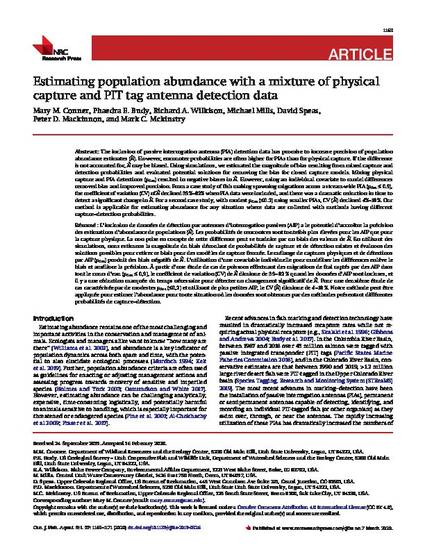
Article
Estimating population abundance with a mixture of physical capture and PIT tag antenna detection data
Canadian Journal of Fisheries and Aquatic Sciences
(2020)
Abstract
The inclusion of passive interrogation antenna (PIA) detection data has promise to increase precision of population abundance estimates (Nˆ ). However, encounter probabilities are often higher for PIAs than for physical capture. If the difference is not accounted for, Nˆ may be biased. Using simulations, we estimated the magnitude of bias resulting from mixed capture and detection probabilities and evaluated potential solutions for removing the bias for closed capture models. Mixing physical capture and PIA detections (pdet) resulted in negative biases in Nˆ . However, using an individual covariate to model differences removed bias and improved precision. From a case study of fish making spawning migrations across a stream-wide PIA (pdet ≤ 0.9), the coefficient of variation (CV) of Nˆ declined 39%–82% when PIA data were included, and there was a dramatic reduction in time to detect a significant change in Nˆ . For a second case study, with modest pdet (≤0.2) using smaller PIAs, CV (Nˆ ) declined 4%–18%. Our method is applicable for estimating abundance for any situation where data are collected with methods having different capture–detection probabilities.
Disciplines
Publication Date
2020
DOI
https://doi.org/10.1139/cjfas-2019-0326
Citation Information
Mary M. Conner. "Estimating population abundance with a mixture of physical capture and PIT tag antenna detection data" Canadian Journal of Fisheries and Aquatic Sciences Vol. 77 (2020) p. 1163 - 1171 Available at: http://works.bepress.com/mary-conner/90/
